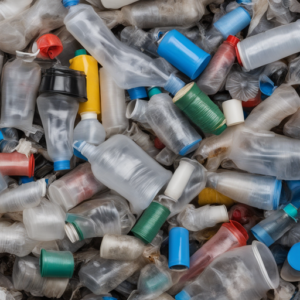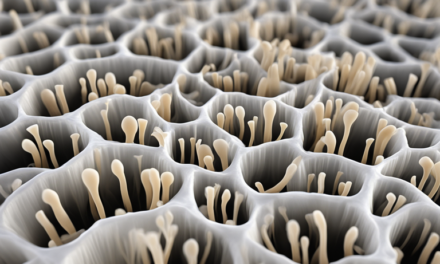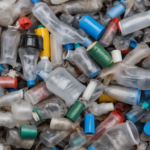 The State of Plastic Pollution
The State of Plastic Pollution
Plastic pollution is a growing global environmental crisis that is profoundly impacting our oceans, wildlife, and human health. Over the last several decades, global plastic production has exploded, with the vast majority of this plastic ending up as waste in landfills, incinerated, or leaked into the natural environment. Only a small fraction is successfully recycled. This rampant plastic pollution is having devastating consequences across marine ecosystems and poses risks to human health that are still being uncovered.
The Rapid Growth of Plastic Production
Since large-scale plastic production began in the 1950s, its growth has skyrocketed. In 1950, approximately 2 million metric tons of plastic were produced globally per year. By 2019, annual global plastic production had increased nearly 230-fold, reaching a staggering 460 million metric tons. That’s equivalent to the mass of approximately 1 billion elephants produced as plastic every year. Much of this rapid surge in plastic production has been driven by single-use plastic packaging, which now accounts for around 40% of global plastic waste generation. Other major sources of plastic waste include consumer products and textiles, which contribute 12% and 11% of the global total, respectively.
Plastic Disposal and the Recycling Gap
Despite the massive scale of global plastic production, recycling rates have lagged far behind. In 2015, approximately 55% of global plastic waste was discarded, while 25% was incinerated and only 20% recycled. This represents a significant recycling gap, meaning the vast majority of plastic waste is not recycled and recycled content makes up only a tiny fraction of new plastic production. For example, in 2019, recycled plastics accounted for just 6% of total plastics production worldwide. Improving recycling rates is challenged by the diversity of plastic materials, presence of additives, and limited infrastructure in developing countries. Nonetheless, dramatically boosting recycling represents an important strategy in reducing plastic waste and pollution.
The Magnitude of Plastic Pollution
With so much improperly disposed plastic waste, it is no surprise that plastic pollution has reached crisis levels globally. Approximately 8 million pieces of plastic enter the world’s oceans every day. Over the course of a year, anywhere from 19 to 23 million metric tons of plastic waste leaks into aquatic ecosystems. The continent of Asia is the dominant source of ocean plastics, responsible for over 80% of the global total. High-income countries like the United States, Canada and across Europe generate more plastic waste per capita. However, inadequate waste management infrastructure means countries such as the Philippines, Malaysia and Sri Lanka have become some of the largest emitters of ocean plastics.
Research indicates that approximately 80% of ocean plastics originate from land-based sources, while 20% come from marine activities such as fishing fleets. While millions of tons of plastic enter the oceans annually, surface water accounts for only a fraction of this input. The missing plastic likely accumulates along coastlines, in gyres like the Great Pacific Garbage Patch, sinks to the ocean floor or breaks down into microplastics. The buildup of plastic waste in waterways implies pollution will persist for decades without meaningful change.
Impacts on Marine Life and Ecosystems
The flooding of our oceans with plastic waste is catastrophic for marine life. Over 700 marine wildlife species are known to be affected by plastic pollution through ingestion and entanglement. This includes 100% of sea turtle species, two-thirds of seal species, half of whale species and one-quarter of seabirds. When marine animals ingest plastic, it takes up space in their stomachs leading to satiation, blocks digestion, and releases hazardous chemicals. Over 100,000 marine mammals and turtles die annually as a result of plastic pollution. Floating plastic waste can also transport invasive species across oceans, disrupt thermal regulation and light availability in the marine environment, and wreck coral reefs through abrasion.
Potential Human Health Risks
There is limited research on the impacts of plastic pollution on human health; however, microplastics and associated toxins are emerging as potential concerns. Small plastic particles and fibers have been detected in several components of the human food chain, including salt, beer, honey and fish. Microplastics may simply pass through the digestive system inertly. But there is also potential for plastic particles and additives to accumulate harmful chemicals, which could biomagnify up the food chain to humans. While evidence of plastic-related health impacts is sparse currently, the precautionary principle indicates this exposure warrants serious study.
Key Takeaways
- Global plastic production has exploded over the last 70 years, especially single-use plastic packaging
- Recycling rates are vastly insufficient, with most plastic waste discarded or incinerated
- Around 8 million tons of plastic enter oceans every year, predominantly from Asia
- Plastic pollution has detrimentally impacted more than 700 marine species
- Research is urgently needed on microplastic health risks for humans
Tackling the plastic crisis will require improving waste management globally, reducing unnecessary plastic usage, advancing biodegradable alternatives, and removing accumulated plastic from oceans and coastlines.






